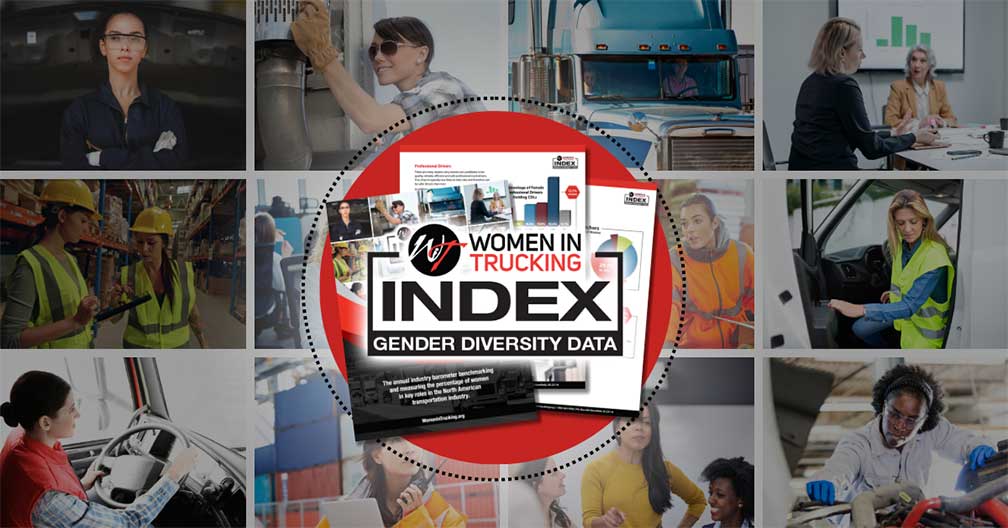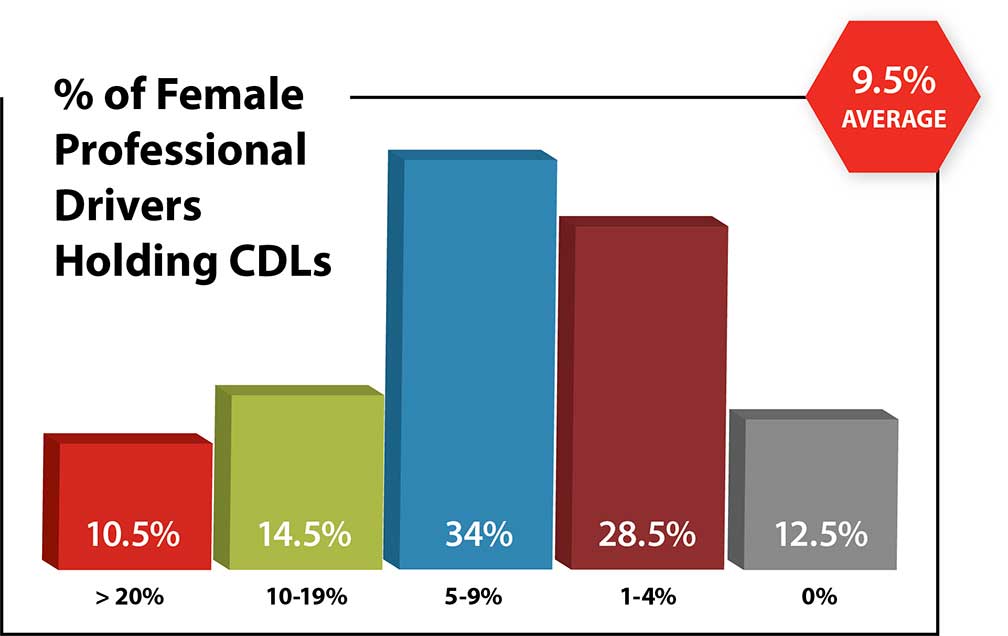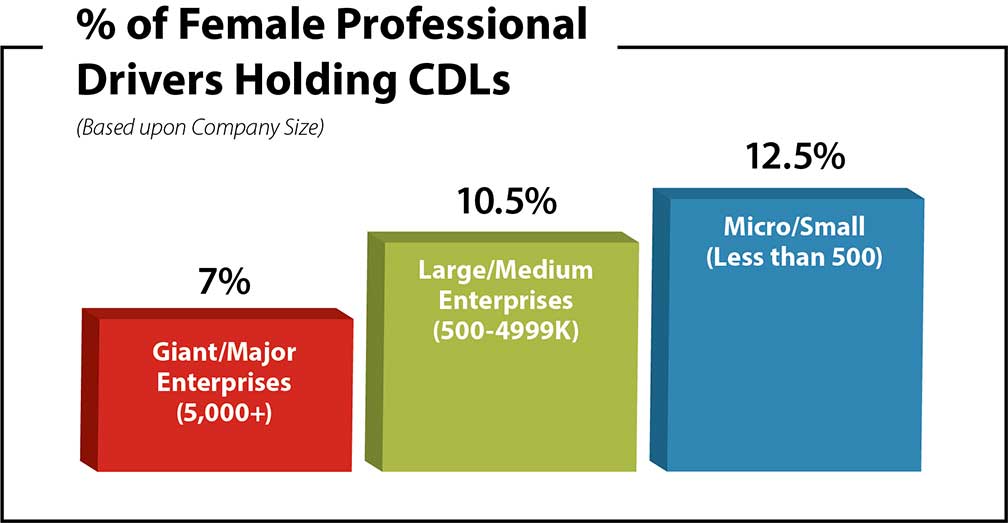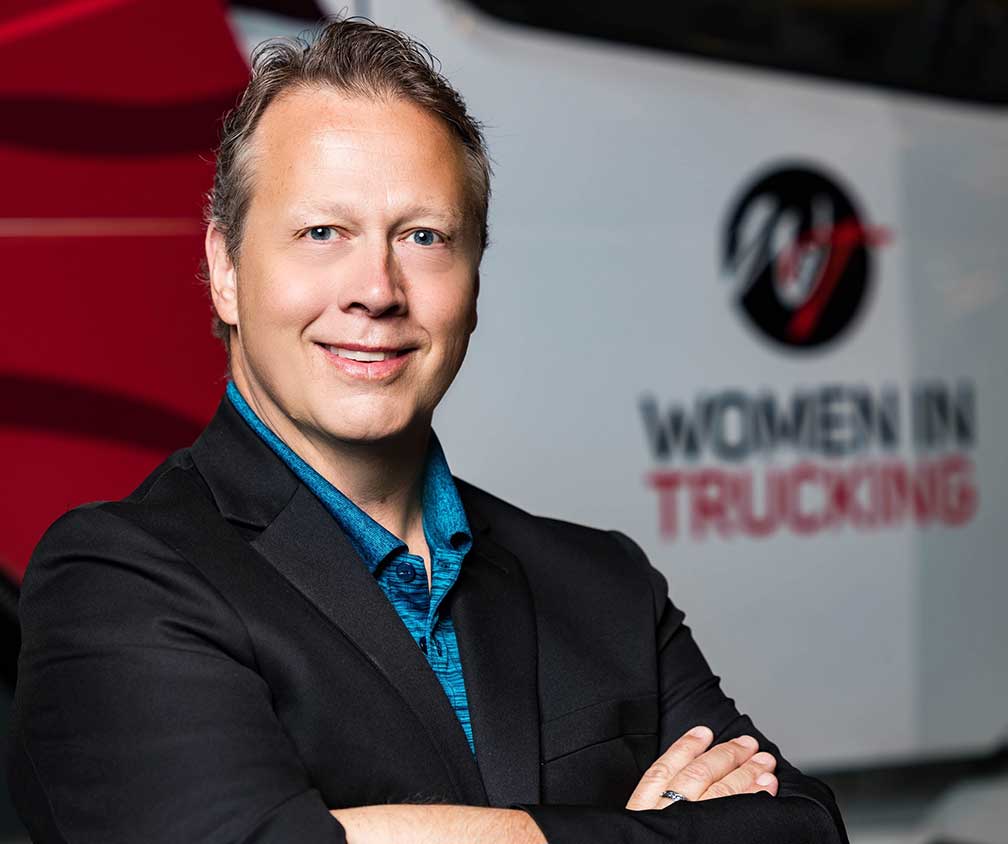Jodi Edwards is a professional truck driver for J.B. Hunt Transport, with more than 2 million miles collision-free.
Deb LaBree is an independent owner-operator of Castle Transport, which has been leased to Landstar since 2014, and is a team driver with her husband Del.
Carmen Anderson is a company driver at America’s Service Line and has 2.5 million safe-driving miles.
What do these three women have in common?
They’re independent women with unique skills that help them to navigate a male-dominant career in professional truck driving.
Professional truck drivers such as these three women are vital to the economy because they transport the vast majority of goods and raw materials needed for businesses to operate, ensuring products reach consumers and stores on time. This is crucial for maintaining efficient supply chains and economic growth. Without them, the movement of essential goods would be severely disrupted, impacting industries from manufacturing to retail.
Truck drivers are considered the backbone of the supply chain, moving goods from production facilities to retailers and consumers across vast distances. They deliver essential items like food, medical supplies, building materials, and other necessities that people rely on daily.
Given the trucking industry contributes significantly to the country’s gross domestic product (GDP), generating jobs and supporting various sectors of the economy. By ensuring timely deliveries, truck drivers enable businesses to operate efficiently and meet customer demands.
The growing presence of women as truck drivers
It’s no secret in the industry that there’s a shortage of professional truck drivers, given the retiring Baby Boomer generation and a growing freight economy. Women are intentionally choosing a career as professional truck drivers to fill the void, which traditionally has been heavily male-populated.
There are many reasons why women are candidates to be quality, reliable, efficient and safe professional truck drivers.
First, women typically are less likely to take risks and therefore can be safer drivers. In addition, women generally possess strong multitasking and organizations skills, they are strong communicators, and they usually are patient, focused and reliable. For these reasons and more, there has been a growing increase in the number of female truck drivers for the past five years.
This is reflected in the Women In Trucking’s (WIT) 2024-25 WIT Index, the industry barometer to regularly benchmark and measure the percentage of women who make up critical roles in transportation. WIT has been regularly publishing the WIT Index since 2016.

From August 2023 through April 2024, WIT conducted a survey of organizations of all sizes in transportation to gather percentages of women in their workforce. The respondents were asked to report data that included demographics, status of the company’s diversity and inclusion policy, and percentages of females in various roles within the company.
This year’s WIT Index (2024-25) shows an average of 9.5% of women are professional drivers who hold CDLs — a decrease of 2.5% from the most recent WIT Index in 2023.

This decrease in female drivers has been explained by some industry observers to be due to a variety of factors, including a lack of quality child care, an increased interest in homeschooling children, safety concerns for female drivers, misperceptions of a career opportunities for female drivers, and an aging driver population that now is retiring.
While some motor carriers and asset-based 3PLs saw the COVID pandemic have a negative impact on recruiting and retention of female professional drivers, others found that women continue to see a career as a professional truck driver to be a good fit for them.
This year, for the first time, the WIT Index is reporting percentage of female professional truck drivers holding CDLs based upon company size.
The WIT Index reports a direct correlation of female drivers to the size of company: The larger the company, the smaller the percentage. This is a logical correlation because the larger enterprises typically are recruiting larger driver work forces (and therefore face the challenge of recruiting and retaining a larger percentage of women in the truck driver role).

According to the WIT Index (2024-25), micro/small companies with less than 500 employees report that 12.5% of their overall professional driver population who hold CDLs are women.
Large/medium enterprises with 500 to 4,999 employees report that approximately 10.5% of their overall professional driver workforce who hold CDLs are women.
Giant/major enterprises with more than 5,000 employees report that approximately 7% of their truck driver population who hold CDLs are women.
It’s important to note that these percentages reflect professional truck drivers who hold CDLs and are driving medium- to heavy-duty commercial trucks, not last-mile or delivery vans or other vehicles that are not heavy-duty trucks.
The future for female truck drivers
While there are unique challenges for women behind the wheel, the career benefits far outweigh these challenges. Job security, flexible schedules, a competitive salary, solid benefits, independence, career advancement, and travel and adventure are just a few advantages.
There’s no question that women like Jodi Edwards, Deb LaBree, and Carmen Anderson will continue to benefit from such opportunities as professional truck drivers.
Brian Everett is the group publisher and editorial director of Redefining the Road, the official magazine of the Women In Trucking Association (WIT). He is heavily involved in strategic counsel for WIT and managing the association’s annual Accelerate! Conference & Expo.
Everett has a reputation as the “go-to guy” for marketing in the transportation and logistics industry. That’s because he has more than 30 years marketing, communications, and sales experience in transportation, warehousing, and logistics, with a special expertise in business strategy, B-to-B marketing, and association management. He also is senior partner of MindShare Strategies. Everett regularly provides marketing counsel to the firm’s key accounts. He is particularly well-connected to shippers as the former Executive Director of the National Shippers Strategic Transportation Council (NASSTRAC) and is the group publisher and editorial director for Food Chain Digest and Food For Thought, the official magazine and member e-newsletter, respectively, of Food Shippers of America.
Everett also was Director of Marketing for C.H. Robinson for 10 years, and helped transform this low-profile company to one of the world’s most widely known brands in the third-party logistics market when it went public in 1998. He also was CEO of the Transportation Marketing & Sales Association (TMSA) for approximately 20 years, and has provided counsel in business strategy, marketing and sales for leading companies in MindShare Strategies’ client portfolio, including Saddle Creek Logistics Services, the American Logistics Aid Network (ALAN), LeSaint Logistics/TAGG Logistics, RWI Logistics/RWI Transportation (part of the Castellini Group of Companies), Satellite Logistics Group, UPS, Line Drive Trucking, and H&M International Transportation, to name a few.
Everett has served on the board of directors for the International Association of Business Communications at the international, regional, and local chapter levels; on the Council of Supply Chain Management Professionals (CSCMP) Twin Cities Roundtable; and was the Chairman of the Transportation Track for a recent Warehousing Education Research Council (WERC) annual conference. In fact, in recognition of his career experiences and passion for industry involvement, Everett was named the youngest recipient of TMSA’s “Lifetime Achievement Award.”






